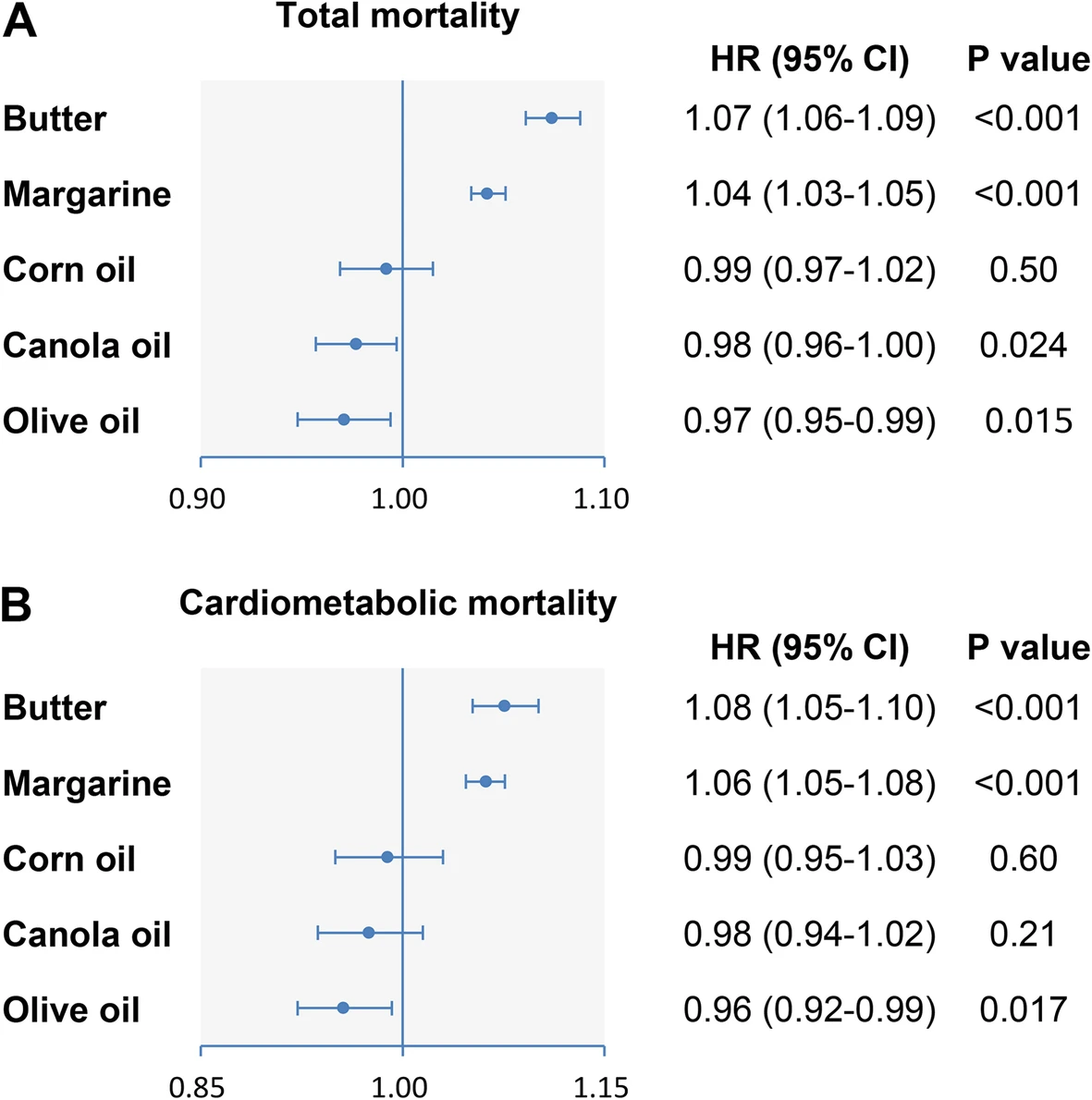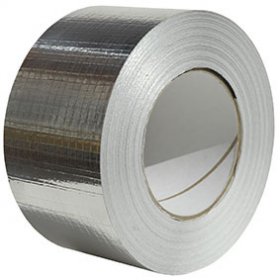A California-based startup called Savor has figured out a unique way to make a butter alternative that doesn’t involve livestock, plants, or even displacing land. Their butter is produced from synthetic fat made using carbon dioxide and hydrogen, and the best part is —- it tastes just like regular butter.
I wonder if they can use CO2 that comes from industrial carbon capture, or if it needs to be something purer that takes a lot of energy to produce.
Also, I’m not sure if we can get industrial volumes of hydrogen from sources other than fossil fuels now. Its been a while, but last I checked it was coming from things like byproducts from reformers.
It would need to be food grade CO2. So breweries would be a good source.
Don’t want to be a hater but doesn’t this basically create fat without nutrients? It feels like this is reinventing margarine albeit in a cool way.
They’re the same fatty acids found in butter. Margarine is hydrogenated oil.
They’re from the same class yes, but is it also going to contain vitamins A, D, E and K2 or contain fatty acids like Conjugated Linoleic Acid or Butyric acid?
I’m trying to point out that factory produced fats will most likely lose out on the health benefits of butter as a source of fatty acids.
They will “enrich it” like the do with bread and other highly processed product with non bio digestable supplements for propaganda purposes.
Is it as bad for your health as hydrogenated oils?
Even if it is – I’m interested in seeing how it performs. Feed some rats 3-5x the recommended amount, see what happens. Have some long term studies.
If it is the same as what we use, right now, for a lessened cost or environmental impact, that is still worth exploring.
So this new carbon sequestering program is going to be kind of a good news / bad news thing. …
There are ≈950 gigatons of excess CO2 in the atmosphere 27% of that by weight is carbon, the us population is 333milion, so if every American eats 770lbs of carbon sequestered butter we will solve climate change.
Just got to start deep frying our steaks in this new butter and we’ll get there in no time
Of course the danger is that this is cancelled out by increased carbon emissions from a making a commensurate amount of toast.
If this were to take off France and the US South by themselves could eat us out of climate change in a matter of months
My thought was “I doubt you can make fat only with hydrogen and carbon”, but fats/lipids are literally hydrocarbons. Adding other elements changes the taste, so it isn’t necessary to have mammals anywhere in the production chain.
Very interesting and probably not the first time this is/has been done. It seems quite obvious.
Something I wondered with this, is that butter/margarine/similar need an emulsifier. They consist of basically 80% fat + 20% water, which would not normally mix, but then you add an emulsifier and they do.
There’s lots of different emulsifiers. In butter, it’s apparently mostly casein. My margarine lists lecithin and glyceride.
And well, looks like glyceride consists out of lots of H, C and O, so I’m guessing that’s probably what they’re using in this process…
It’s quite obvious at a theoretical level but not easy in terms of figuring out the actual process. A lot of science like that.
According to the savor team, it was quite easy for them:
“We start with a source of carbon, like carbon dioxide, and use a little bit of heat and hydrogen to form chains which are then blended with oxygen from air to make the fats & oils"
I want to guess they are glossing over a complicated enzyme they created, or other form of reagent.
That’s like saying you can build a nuclear bomb by smashing pieces of uranium together. Technically true, but it’s a lot more complicated than that.
Yeah, they’re definitely glossing over a lot of things. They don’t even mention the source of co2 or even a real timeline.
this is a good https://www.nature.com/articles/s41893-023-01241-2 article on different ways this can be done
i learned the nazis made butter from coal!
Hopefully by producing a potentially profitable product, they’ll secure the funding to drive some carbon capture systems as well.
Adding other elements changes the taste,
This is not how chemistry works at all.
To start with, fatty acids also need Oxygen because of the COOH and OH group of the glycerin in fat. They are not hydrocarbons. You know what also is just made of Carbon, Oxygen and Hydrogen? Hundreds of thousands of molecules. All sugars and carbohydrates. If you allow for Nitrogen too, you could cover most molecules found in biological life.
None of this has any bearing on how difficult or complicated it is to synthesize these from more basic molecules like CO2 or H2.
The biggest question which is barely alluded to in the article is cost. If it can’t compete with mass produced butter at cost and scale then it’ll just be another “alternative” which is good but not as big.
They also mention that they compared emissions and land use but give no aspect of what synthetic processes are used (I’d assume they at least have provisional patents on the “how to” already).
Yeah, that’s always the thing with these technological solutions, you practically cannot compete with plants. They involve barely any work, nor machinery, for the output they deliver.
Since butter is only strings of hydrocarbon, this might not be an alternative at all. It might be more “real” than the real thing.
Terroir is essential to any natural food product. The impurities are what make it good, not something which detracts from the whole.
Could be subsidized as a “real” carbon offset. That could make it competitive with other butters. Assuming it’s actually legit.
It wouldn’t offset much, given the upper price for direct air capture here https://www.iea.org/commentaries/is-carbon-capture-too-expensive at a little under $350/ton, and assuming a pound of ‘butter’ comes entirely from CO2 (some will by hydrogen based on the article, but assuming that’s negligible) that means at most the credit should be 16¢ per pound, which is 3.4% of the average cost of a pound of butter ($4.69, https://fred.stlouisfed.org/series/APU0000FS1101). My cost of butter is below average and it’s still only a 4.5% subsidy.
Edit to add: if you count the CO2 production from obtaining the milk used for real butter against the cost as well (let’s assume the resources for this process and the process of making milk into butter are similar), it seems like producing a pound of butter is emits around 4 kg of CO2, which nets you another $1.4 on each package of butter (if you use the lower number for carbon capture this is a total of $0.6 including the pound of capture from above). This is actually pretty significant, so if there was a tax for greenhouse gas emissions to cover the cost of recapture it would help a product like this be more viable.
“The big challenge is to drive down the price so that products like Savor’s become affordable to the masses—either the same cost as animal fats or less. Savor has a good chance of success here, because the key steps of their fat-production process already work in other industries,” Gates said.
Sounds like it’s not currently price competitive but it might be in the future. I expect economies of scale would be helpful too.
Take all the subsidies out of the dairy industry and see how competitively priced butter actually is.
With Gates, you know it’s going to be priced to be competitive and disruptive to the market.
As if dairy fat isn’t subsidised already.
So they invented another kind of margarine.
No, they invited another kind of cow.
Did the cow accept their invitation?

so what i don’t get is how any margarine could have the same flavour as butter without adding in some sort of protein and presumably a bit of sweetener, considering that butter is fat/milk protein/milk sugar (lactose)…
You can obviously get close enough (i mostly eat margarine), the non-fat content of butter is very small after all, but still surely you have to add those things to get that extra kick of flavour that butter has?
This isn’t margarine. Margarine is made from hydrogenated vegetable oil. This process allegedly creates the same hydrocarbon chain fatty acids found in butter.
Margarine is dangarous, it contain high amount of trans fat. Try to avoid it
where on earth did you get that nonsense from? the swedish food safety agency explicitly says that modern margarine contains basically no trans fat at all, and the primary source of trans fat is diary products
Ok ok you don’t need this attitude. I wasn’t aware of the 2018 FDA ban on trans fat.
Looks like saturated fat. Don’t eat it. Queue ketobro pseudoscience.

Multivariable-adjusted hazard ratios of total and cardiometabolic mortality for 1-tablespoon/day increment in cooking oil/fat consumption. Forest plots show the multivariable HRs of total (a) and cardiometabolic (b) mortality associated with 1-tablespoon/day increment in butter, margarine, corn oil, canola oil, and olive oil consumption. HRs were adjusted for age, sex, BMI, race, education, marital status, household income, smoking, alcohol, vigorous physical activity, usual activity at work, perceived health condition, history of heart disease, stroke, diabetes, and cancer at baseline, Healthy Eating Index-2015, total energy intake, and consumption of remaining oils where appropriate (butter, margarine, lard, corn oil, canola oil, olive oil, and other vegetable oils). Horizontal lines represent 95% CIs
Cooking oil/fat consumption and deaths from cardiometabolic diseases and other causes: prospective analysis of 521,120 individuals https://bmcmedicine.biomedcentral.com/articles/10.1186/s12916-021-01961-2/figures/1
There’s so much factors at play here, take the numbers with a grain of salt. Remember the thing with eggs and cholesterol?
I do remember, yes. Eggs are still bad, high cholesterol levels are still bad, eggs still raise cholesterol levels. TMAO is still bad. Eggs still raise TMAO.
Industry pseudoscience is exceedingly dangerous. What the egg industry studies (and their friends in cheese) do usually is to swap their object of desire with something else that raises cholesterol; or they use people who already have high cholesterol. Most people aren’t aware that there’s a cholesterol plateau which, if already achieved, hides dose effects.
take the numbers with a grain of salt.
oh, and salt is still bad.
Salt is quite possibly the single most important nutrient we take in. Well, sodium is anyway. Is too much salt bad? Sure. That’s what “too much” means. Too much sun is also bad but a little is required for vitamin D production.
Being so reductive with your claims makes the rest of your argument less compelling.
Like I said, queue ketobro pseudoscience.
Sodium-potassium pumps are pseudoscience, got it.
Humans didn’t exist before salt mining, got it.
Fine, I’ll bite.
Salt mining is a human invention, though not at all a recent one. Seeking out natural salt deposits to directly consume is essential herbivore behavior because vegetation alone is an insufficient source of key minerals. Adding animal products, especially seafood, to a diet should be sufficient for minimum healthy intake of not just sodium but all trace minerals and vitamins but concentrated supplements are obviously also available and careful meal planning can get it done with just plant products. That is of course a truth for the modern, developed world and not at all indicative of our biological heritage.
The downsides of slight-to-moderate overindulgence of salt, mostly high blood pressure through water retention, can be offset by a more active lifestyle. (Sweat more, hydrate more, flush the excess out.)
And it’s cue. A queue is a waiting line.
The “thing” with cholesterol is that the science wasn’t actually wrong. Eating foods laced with cholesterol is indeed unhealthy, which is why everyone thought cholesterol was to blame. Turns out that cholesterol is not to blame. The real culprit was saturated fat. Coincidentally, saturated is most concentrated in animal products, which also contain cholesterol. Oops. Well, we knew something in there was destroying people’s cardiovascular systems.
But hey, all that would require knowing biochemistry and that is just too inconvenient for most folks. Easier to treat food as a religion.
I know an entire village who eat eggs scrambled in butter everyday and they still live ~80 years.
Interesting way to get fat alternatives, people are already used to eating fake butter regularly, so it probably wouldn’t take much to add this to our diet.
It’s also closer to butter than butter alternatives. It’s not made to be more healthy, just more planet friendly.
Fake food is going to be more healthy than the real deal?
Sure buddy
They said it’s NOT made to be more healthy.
It won’t be, it’s processed shite
So is any meat, mayonnaise, even butter is processed. Ever went into a fast food chain? Most ingredients are processed to the bits.
You better not take any medicine, that super processed? And Coca cola or any energy drinks? Bleh, made in labs!
I guess you only eat whole grains collected by you, that must suck.
Dam y’all really getting bent on shape over this lol
OKAY
It’s not made to be more healthy, just more planet friendly.
Fake medicine is going to be more healthy than the real (plant) deal? Sure buddy.
If it’s chemically identical, what does it matter if it’s come from dairy, this process, or a Star Trek replicator?
Good or bad, it’s still processed food.
That’s my half-assed neutral statement. I choose not to eat processed foods. As long as there’s disclosure, I don’t care.
What people eat or don’t eat is their business.
I wrote it’s not made to be more healthy, because that’s the current marketing of butter alternatives. This isn’t claiming to be more healthy. The compounds are the same as the fatty acids in butter.
It’s simply a way to get butter while reducing carbon dioxide, rather than increasing it.
This fallacy is called an appeal to nature.
It is also a fact that butter is a staple food that has been used for thousands of years with a proven track record.
This may be a logical fallacy known as false equivalence, when one fact is stated or implied to be conflated with another not directly related fact.
This fallacy is called an appeal to tradition.
Just because something is fallacy the way it was presented does not make it wrong if he facts check out :)
Your facts don’t check out, that’s what makes you wrong. Fallacies are just the symptom.
Wait. So a “butter star” is possible?
Once one is discovered, there will be a NASA mission to bake a gigantic loaf of bread and launch it at the butter star.
And Musky’ll have a tantrum trying to race a croissant at it first.
I’m not hungry.
The problem with making carbon into butter is it will just be released once someone eats it and burns off the calories. BUT, I think you can make soap from just about any oil. So you could turn carbon from the air into fake butter, turn that fake butter into soap, and then store the soap in caves, solving any potential soap shortages for the next several millennia while also solving the climate crisis.
Butter is already made from carbon. They’re creating the same hydrocarbon chains that are in the fatty acids that butter is comprised of, just without the cow.
Also, for anyone who thinks that carbon bound up in fatty acid chains in butter is released back into the atmosphere through metabolism, I will direct your attention to the population US Midwest and Great Plains. These people have been proving that you can effectively sequester butter for many decades.
To be honest, people probably cause more environmental damage from releasing methane after eating butter. Lol
Luckily methane, while a potent greenhouse gas, breaks down in the atmosphere quickly. It does break down into CO2 and water, so the question quickly becomes: “are the farts of Midwesterners more potent than the amount of CO2 taken out of the atmosphere by making butter?”
My quick guess is luckily, no, they are not. Some amount of the butter will be stored in fatty tissues which will be sequestered 6 feet underground in a cement box eventually. Most will be shat in liquid or semi-solid form into a toilet to be processed by waste management. As long as they are responsible and compost it into nitrate rich fertilizer we should stay very comfortably ahead of the FBI (Fart to Butter Index).
There’s nothing good about methane release. It’s 80 times more potent than carbon dioxide as a greenhouse gas. After ~12 years, it breaks down into CO2 and water, both of which continue to contribute to the problem, since water vapor has no easy way to return to Earth once in the upper atmosphere.
Human farts are not a concern, but cow farts are a huge contributor to climate change.
I definitely understand that. My commentary is mostly satire based in fact. Hence the FBI at the end.
I figured, but the first part concerned me. There are a lot of non-scientific comments on this post in a science community. I was being overly analytical. Sorry about that.
Yo this would be great for some actual proper carbon sequestration. Make some butter from the air and pump it back down into the wells.
So I have limitations with videos, but the argument that capturing carbon is costs more energy than it took to put into the air is valid as long as we’re still dumping carbon in the air. But, we have to stop putting carbon in the air and we have to start taking it out again.
completely agree with you, but until the whole world stops dumping it in the air (classic) carbon capture is worthless. I’m interested if this thing of making butter can be worth it, because you’re not just removing CO2, you are also making something that would have required farming a cow, which is much more resource intensive.
I guess we’ll need some studies done on the topic
It’s like a very limited Star Trek replicator. It can make anything you want as long as it’s butter.
















